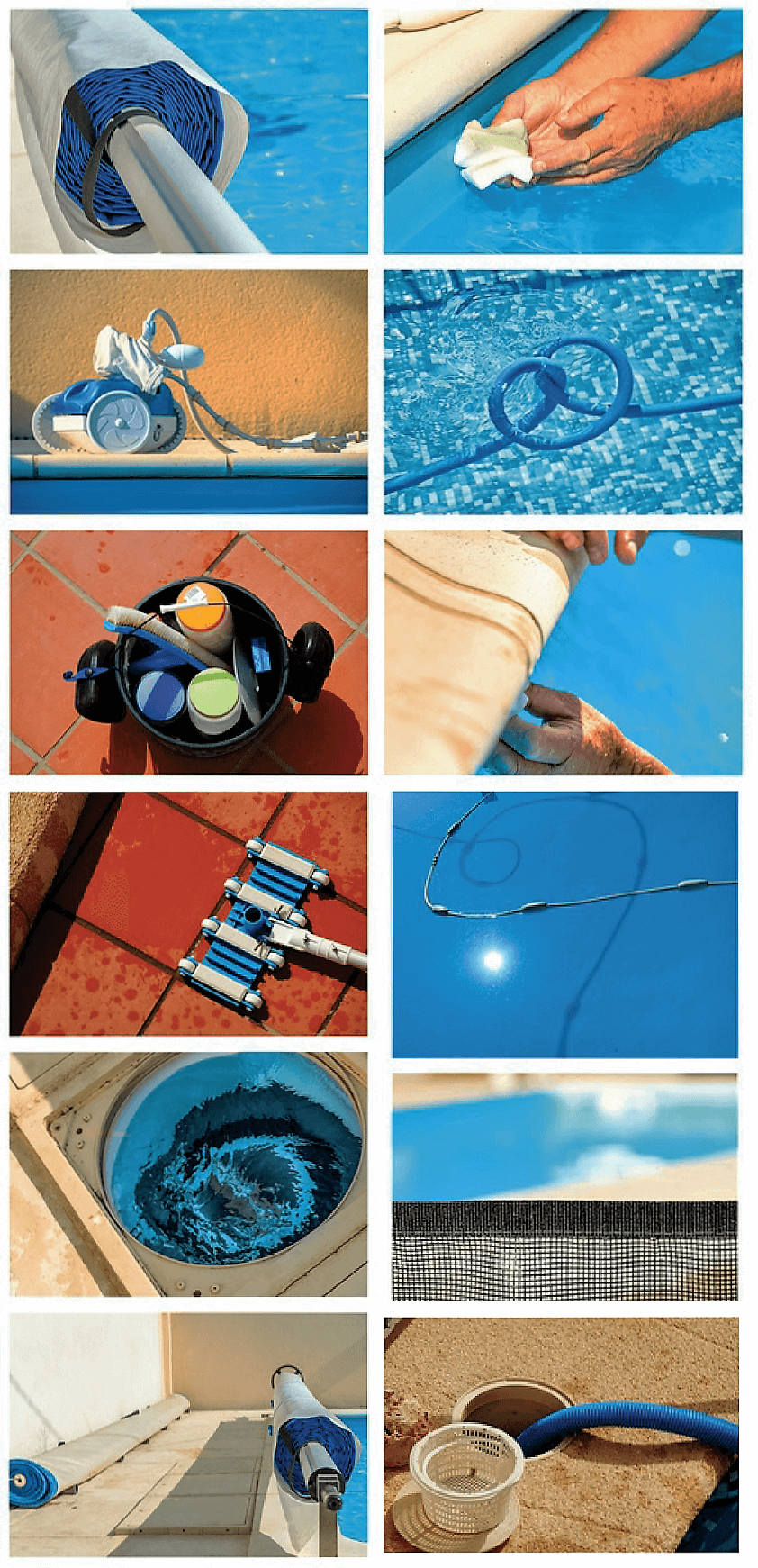Pool Care Training for Homeowners
When you have just moved into a new home with a pool and need assistance, call Patten Pool Repair. We can provide a “Pool School” and inspect your equipment and recommend any repairs, plumbing alterations or special maintenance.
Pool Maintenance Tips:

Pool filters should run for around 8 hours per day. Cleaners should run long enough to keep your pool clean, usually 2 to 4 hours. Check chlorine, PH and total alkalinity and adjust as necessary once per week.
Run your heater a couple time a month for more reliable operation and longer life.
Keep the water level at the mid-tile line (usually in the middle of the skimmer opening) for most pools. That is about 1 hour’s worth of water added weekly. Be sure to set a timer so you don’t forget that the water is on. In the summer, pools can lose 1/4″ to 1/2″ of water a day or more if kids are playing in the pool. If you go on vacation, get a prattle auto fill line. Even neighbors will forget and allow the level to get too low.
If you are going to have a pool party be sure to let your service person know ahead of time. Run the filter several extra hours after the party and add some chlorine to prevent any problems. Also if you haven’t used your heater be sure to test it at least a week in advance so if there is a problem there will be time to fix it.
Make sure your stabilizer level is adequate. The lack of stabilizer in your pool will allow the chlorine to burn off rapidly in the summer. Even in salt water pools, this applies. Once the stabilizer is at the correct level, you need only check it every couple of months.
Make sure the calcium hardness level is adequate. The pool water wants to attain a specific level of calcium and if you do not add it, it will get it from the plaster, shortening the life. Again, once the calcium level is correct, you only need to check it every couple of months.
Always keep your automatic pool cleaner in top working condition as it will save a lot of time used for maintenance.
Checking your pools LSI:
Langelier Saturation Index (LSI) is the formula used to balance your swimming pool water.
If LSI Index is between -0.3 and +0.3 pool water is Balanced.
When pool water is balanced, it has no effect on the pool or equipment. There are two values you can readily change to help improve your LSI value to get it into the optimum range: pH and Alkalinity level. If LSI Index is less than -0.3 pool water is Corrosive.
Pool water may cause etching, pitting, dissolving and staining of walls, grouting and plumbing.
- As Stabilizer Increases, LSI Decreases
- As Total Dissolved Solids Increase, LSI Decreases
To raise your LSI value, add sodium bicarbonate or baking soda (can be found in pool supply stores). Consult the calculator above to determine the target Alkalinity value (recommended range is 80-120ppm; however, you may find that a level lower than 80 may be ideal for a balanced LSI value).
If LSI Index is greater than +0.3 pool water is Scale Forming.
Pool water may deposit excess minerals on the pool and equipment. Scale generally appears as white or lightly colored rough blotches on the pool walls. It also adheres to other objects in the pool, piping and filter system. Scale can restrict water flow, shortening filter runs and reducing filtration efficiency.
- As Temperature Increases LSI Increases
- As Total Alkalinity Increases LSI Increases
- As pH Increases, LSI Increases
- As Calcium Hardness Increases, LSI Increases
To lower your LSI value, add muriatic acid (can be found in pool supply stores). Consult the calculator above to determine the target pH value (recommended range is 7.2 to 7.6).

